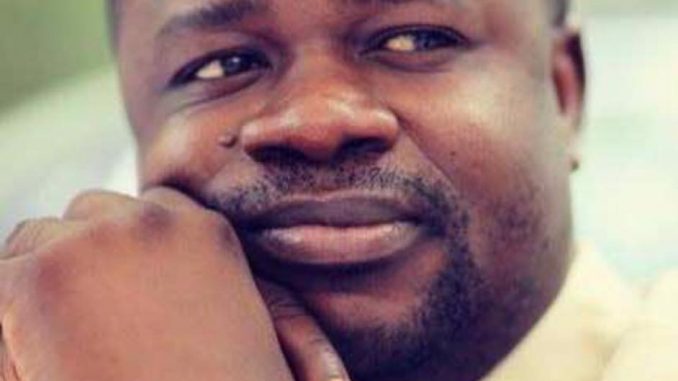
John Baimba Sesay
Africa continues to be a recipient of aid and following decades of
such practice, it became some sort of an ‘acceptable norm’, tied to
our development process, thus exposing itself to the challenging
dangers of always being on the receiving end. The continent is said
to account for around 20 percent of U.S. aid.
The idea has been; large aids can remedy poverty. Such an idea,
according to Daron Acemoglu and James A. Robinson “has dominated the
theory of economic development — and the thinking in many
international aid agencies and governments.”
They argued, in ‘Why foreign aid fails – and how to really help
Africa’, that foreign aid has little to do with moving people out of
abject poverty, rather, “it is due to economic growth in countries in
Asia which received little aid.”
Sound economic growth is what nations need in their efforts towards
tackling poverty. Asian nations did same. Today, they serve as lead
examples.
China, for instance, continues to enjoy remarkable economic growth,
with the World Bank saying, that country’s GDP growth “has averaged
nearly 10 percent a year”, the fastest sustained expansion by a major
economy in history.
It has lifted more than 800 million people out of poverty, and
continues to do so, all thanks to their prudent economic steps they
continue to take.
Africa, no doubt, enjoys rich natural resources and market potential.
However, it is in need infrastructure and development finance to
stimulate her growth. The continent has six of the world’s 12
fastest-growing economies – Ethiopia, DR Congo, Côte d’Ivoire,
Mozambique, Tanzania, and Rwanda.
Despite all these beautiful stories, it continues to be donor driven.
Take her engagement with China; aid has been a critical instrument
used by the Chinese in engaging the continent. By 2011, Chinese
investment in Africa, reports state, grew from USD 210 million in 2000
to 3.17 billion.
The 2018 FOCAC meeting in Beijing saw China pledge $60 billion to the
continent in loans, grants, and development financing: $20 billion as
credit lines, $15 billion as aid and interest-free loans, development
financing taking $10billion, $10b for investment and the remaining $5b
to finance imports.
But at what price should it continue receiving aid for development?
Much, the continent has not done, in fully exploring her potentials
for growth. This has been one major challenge affecting her
development efforts, to the point of over relying on external
interventions, risking any chance of acting or speaking as an
‘independent’ continent.
Her unexploited deposit of minerals alone can be a source for our
growth, when properly utilized, plus other potentials in agriculture,
tourism and even taxation. The continent’s commitment to utilize
revenues coming from taxation alone could be a good starting point,
depending there is an encouraging culture towards paying taxes.
Africa is home to many of the world’s large and unexploited deposit of
minerals, accounting “for three-quarters of the world’s platinum
supply, and half of its diamonds and chromium. It has up to one-fifth
of gold and uranium supplies and it is increasingly home to oil and
gas production with over thirty countries now in this category”,
writes Carlos Lopes. (Read: Africa must benefit from its mineral
resources.)
These large deposits of natural resources, writes Ayodele Odusola,
Chief Economist, UNDP Regional Bureau for Africa, “promise a bright
future for developing value chains” that agriculture and the
extractive sectors are prerequisites of national, regional and global
value chains.
Building on existing positive trends in a bid to maximize foreign
investments is all what Africa needs. Macroeconomic environment should
be strengthened, with investment in quality education given priority,
added to skills development in areas of technology.
Working on strong regional economic integrations could be vital. This
will help in removing those barriers to free trade, which is
detrimental to the growth processes of countries. Further, the need
for cohesive regional and sub-regional approach to development
should be pursued more so at policy levels. Economic free zones have
form the base for growth among East Asian nations. Africans should
learn from this.
Not being able to properly identify priorities of growth and pursuing
them forms the crux of our challenge. Job creation, lower levels of
investment could explain Africa’s slower growth. However, “it is the
slower productivity growth that more sharply distinguishes African
growth performance from that of the rest of the world”, says a study
by the International Bank for Reconstruction and Development / The
World Bank on Challenges of African Growth Opportunities, Constraints
and Strategic Directions.
Africa today goes through what I would call development inertia.
Reasons abound for this, added to what I have started above.
Recovering from this growth inaction involves drastic and radical
actions.
Another reason for our donor-driven nature; the mineral sector.
Africans have not seen how much our minerals have been of benefit,
except for a few countries. We are donors, giving out our minerals to
developed nations and end up receiving paltry support from them in the
form of budgetary support, support to infrastructure and the rest.
Ridiculous!
In ‘The case for mineral resources management and development in
Sub-Saharan Africa’, Lloyd A. K. Quashie calls for a development
agenda that places “more emphasis on the exploration, development,
exploitation, and rational management of its mineral and energy
resources for sustainable economic growth.”
Here are examples; Zambia had to raise taxes for mining companies from
25 to 30% and introduced a windfall tax for exceptional profits,
earning the country an extra $415 million in supplementary revenues.
Early this year, the DRC, Africa’s largest copper producer and world’s
biggest producer of cobalt, signed into law a new mining code that
increased royalties and taxes that mining companies pay.
Reforms in the mineral sector, when undertaken, are bound to defeat
the challenges donor dependency comes with. Development activities
should lead to increase linkages to other economic opportunities.
Economic diversification is also critical. Agriculture can be a strong
source of growth. Statistically, the continent hosts 60% of the
world’s uncultivated arable land, said to have produced, in 2015, 13%
of global oil, up from 9% in 1998. Investments in this sector,
therefore, need to be increased.
It remains highly risky, to be too reliant on external funding for
growth. The effects, tend to be noxious; In terms of policy making, we
do not enjoy autonomy, thus undermining our independence.
Fact is, Africa’s voice on global issues tend to be weak. For
instance, her call for a reform of the UNSC has not achieved much,
much to the humiliation of our collective sense of pride. Donors
determine what to do when shaping our development path, as against
what should be determined by elected officials.
There is a risk in always receiving but there is a lot we could do to
address this. Time to get things right!
—
John Baimba Sesay -M.A,B.A(Hons)
PR/Communications Specialist
+23276635830




